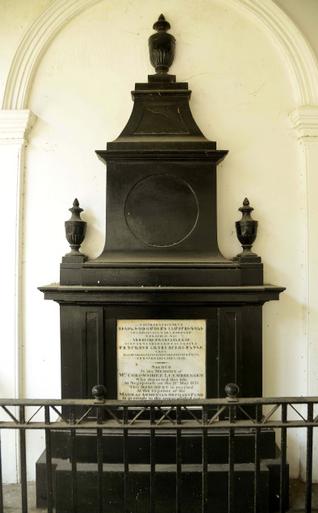
International Women’s Day was celebrated this week and so it’s perhaps appropriate that this week’s story is about a remarkable woman, who may not have lived in Madras, but has a memorial in the city’s Armenian Church.
Located on the western wall of the verandah that leads to the church is a handsome memorial dedicated to Coramseemee Leembruggen. As to what such a Dutch name was doing in the Armenian church was a puzzle to me till I readArmenians In India, from the Earliest Times to the Present Day by Mesrovb Jacob Seth, written in 1937. I learnt that the lady was an Armenian whose real name was Hripsimah. Coramseemee or Khoromeseemee is apparently the corrupt form of the Armenian name.
She was born in 1778 as the only daughter of Eleazar Woskan, a wealthy Armenian based in Surat. While still in her teens, she was given in marriage to Stephen Agabob, an elderly widower whose sole aim in life appears to have been to marry young girls and treat them harshly. Not one to stand such brutality, Coramseemee left him and took refuge in the house of an English doctor, who was a family friend. In 1795, she fell in love with Robert Henry Leembruggen, a Hollander who was in the employment of the Dutch East India Company in Surat. However, knowing fully well that he was not to be trusted financially, she had the prudence to enter into what would today be known as a pre-nuptial agreement. As per this, her Rs. 40,000 in cash and valuable jewels were to be hers alone, and she was in no way to be held responsible for any debts her husband may incur.
They lived happily for a while, during which time Leembruggen was transferred to Colombo and Nagapattinam. By then, they had begun a business, of which she was sole proprietor. Differences arose over Leembruggen’s profligate nature and the couple separated in 1817, with Coramseemee paying her husband a monthly maintenance allowance of 25 pagodas thereafter. He died in 1819, leaving behind nothing but some old furniture that she never bothered to claim. She ran her business successfully on her own, till her death in 1833.
Between 1819 and 1833, she had the habit of making a new will each year, copies of which were sent to the Armenian Church, Madras. When she died, the last will and testament, after several charities to Armenian causes, left the bulk of her estate to the Armenian Church, Madras, for the Armenian Orphans Fund. The memorial here was put up for her in gratitude. Two other legatees, the Armenian College and the Armenian Church of Nazareth in Calcutta put up a memorial for her in the church in that city.
Taking into account her tombstone in Nagapattinam, there are therefore three memorials to her in India. That must be a record of sorts.
source: http://www.thehindu.com / The Hindu / Home> Features> MetroPlus / by Shriram V / Chennai – March 14th, 2016